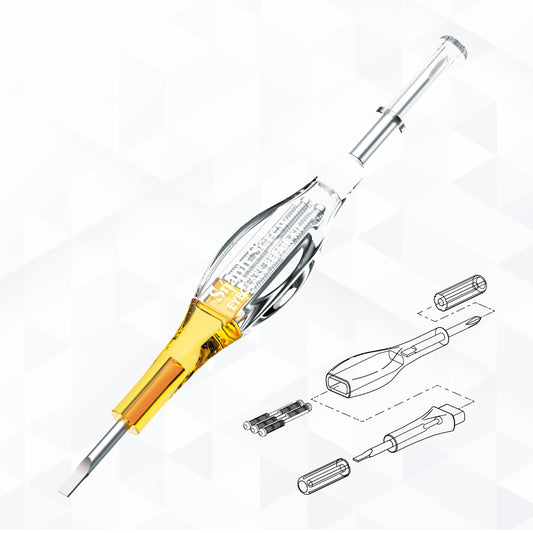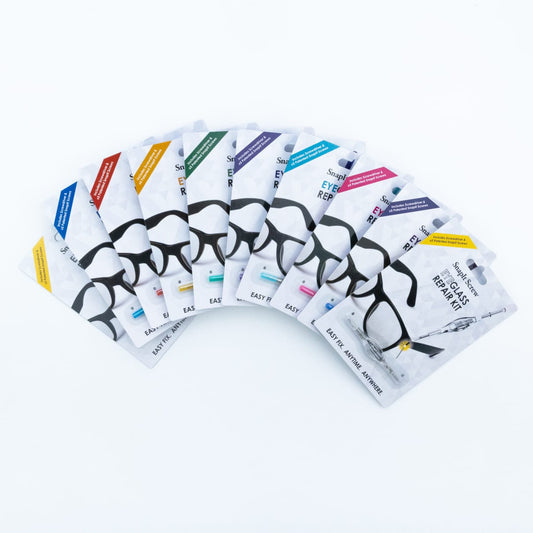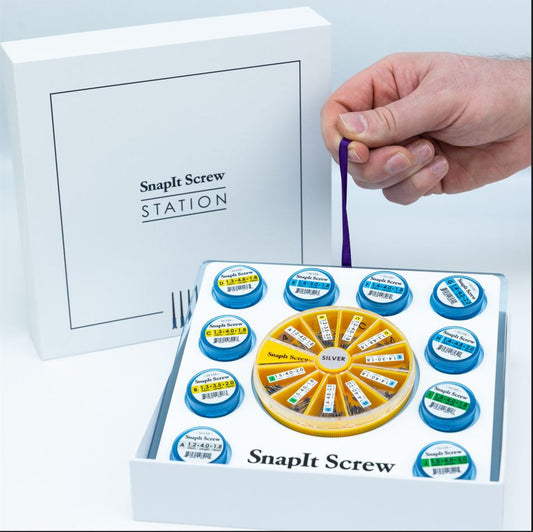If you're planning to buy glasses online, there's one number that’s often overlooked - but it’s absolutely crucial for clear, comfortable vision: your pupillary distance, or PD. This simple measurement tells you the distance between the centres of your pupils and ensures your prescription lens aligns perfectly with your eyes.
Getting this number right is key. An inaccurate pupillary distance measurement can result in blurry vision, headaches, or eye strain, especially if you’re using progressive lenses or multifocal lenses. The good news? It’s easy to measure your pupillary distance at home with just a few tools - or even with your phone’s camera. This guide explains everything you need to know to get your PD, from measuring it manually to understanding the difference between single and dual PD.
What is Pupillary Distance (PD)?
Pupillary distance is the measurement between the centre of one pupil and the centre of the other pupil, expressed in millimetres (mm). It’s also known as interpupillary distance, and it ensures that the optical centre of your lenses lines up perfectly with your pupils.
When ordering eyeglass lenses, especially prescription glasses, the lab needs this number to align the lens’ focal point with your eyes’ natural focus. If this distance is off, even by a couple of millimetres, it could affect the clarity and comfort of your vision.
Why is PD Important for Glasses?
Your PD is important because it tells the lens manufacturer where to position the strongest part of the lens - the spot in your lenses you look through most often. An incorrect PD measurement may cause eye strain, blurry vision, or even headaches.
Whether you're using single vision lenses, progressive lenses, or multifocal lenses, an accurate pupillary distance ensures the correct placement of each prescription lens for clear, comfortable sight.
What’s the Difference Between Single and Dual PD?
There are two types of pupillary distance measurements you might encounter:
-
Single PD: This is one number that measures the distance between the centre of your right pupil and the centre of your left pupil. It's commonly used for single vision glasses.
-
Dual PD: This provides two numbers - the distance from the bridge of your nose to each pupil. It’s especially useful for progressive or multifocal lenses, where each lens needs to be individually aligned.
You might see dual PD written like this: 32/30 mm (32 mm for the right eye, 30 mm for the left eye). Dual PD is usually written on prescriptions by an optician or eye care professional when precise measurement is required.

How to Measure Your Pupillary Distance at Home
You don’t need special equipment to measure your pupillary distance at home. You just need a PD ruler, a mirror, and steady hands.
Steps to Measure Your PD Manually:
-
Stand in front of a mirror, about 20 cm away.
-
Hold the PD ruler against your brow, directly above your eyes.
-
Close your right eye and align the 0 mm mark of the ruler to the centre of your left pupil (the black part in the middle).
-
Keep your head still and eyes as still as possible, now open your right eye and close your left eye.
-
Look at the number that lines up with the centre of your right pupil - this is your single PD.
-
Repeat a few times to ensure consistency.
If you’re helping someone else, simply measure the distance between their left pupil and right pupil while they are looking straight ahead.
How to Use a PD Ruler to Take the Measurement
A PD ruler is a measurement tool made specifically to help measure your pupillary distance. It’s marked in millimetres and often available for free at optical shops or online.
Here’s how to use it properly:
-
Ask a friend to hold the ruler horizontally across your brow.
-
Make sure the person you're helping is looking straight ahead, and not moving their eyes.
-
Line up the 0 mm mark with the centre of the left pupil and read the number aligned with the centre of the right pupil.
-
This will give you your PD measurement in mm.
A proper PD ruler will help ensure the measurement is as accurate as possible, especially if you plan to order glasses online.
What Is the Average Pupillary Distance?
The average pupillary distance for adults typically falls between 54–74 mm. For children, it's between 43–58 mm. However, your PD might be outside these ranges and that’s completely normal.
Typical PD Ranges:
-
Adult Women: 54–68 mm
-
Adult Men: 60–74 mm
-
Children: 43–58 mm
Even if your pupillary distance falls within the average, it’s always best to take your own pupillary distance measurement. Using an average value instead of your actual number could result in eyeglass lenses that are slightly off-centre, especially for high prescriptions or progressive lenses.
What’s the Correct PD for Progressive or Multifocal Lenses?
If you're using progressive or multifocal lenses, having a dual PD is often recommended. That’s because these lenses have different zones (for distance, intermediate, and near vision) spread across the lens.
With dual PD, the lens manufacturer can align the optical centre for each eye individually, improving both comfort and clarity. Using only a single PD for multifocal lenses may cause misalignment, which could result in eye strain or difficulty switching between viewing distances.
When working with an optician, always ask if you should calculate near PD as well, especially for reading glasses or close-up tasks.
Where Can You Find Your PD on Your Glasses Prescription?
Sometimes your PD is included in your glasses prescription, but it’s not guaranteed - especially if you’ve only had an eye test and haven’t purchased eyewear from the same provider.
Look for these clues:
-
A number followed by mm, like 63 mm (single PD)
-
Two numbers, like 32/30 mm (dual PD: right eye / left eye)
-
The abbreviation PD near the top or bottom of your prescription
If your pupillary distance isn’t listed, you can ask your optician for it or measure it yourself at home using the steps above.
With this guide, you're now ready to measure your pupillary distance confidently and ensure your next pair of glasses provides the clarity and comfort your eyes deserve.
 and
and  WHEN BUY 3 KITS
WHEN BUY 3 KITS







